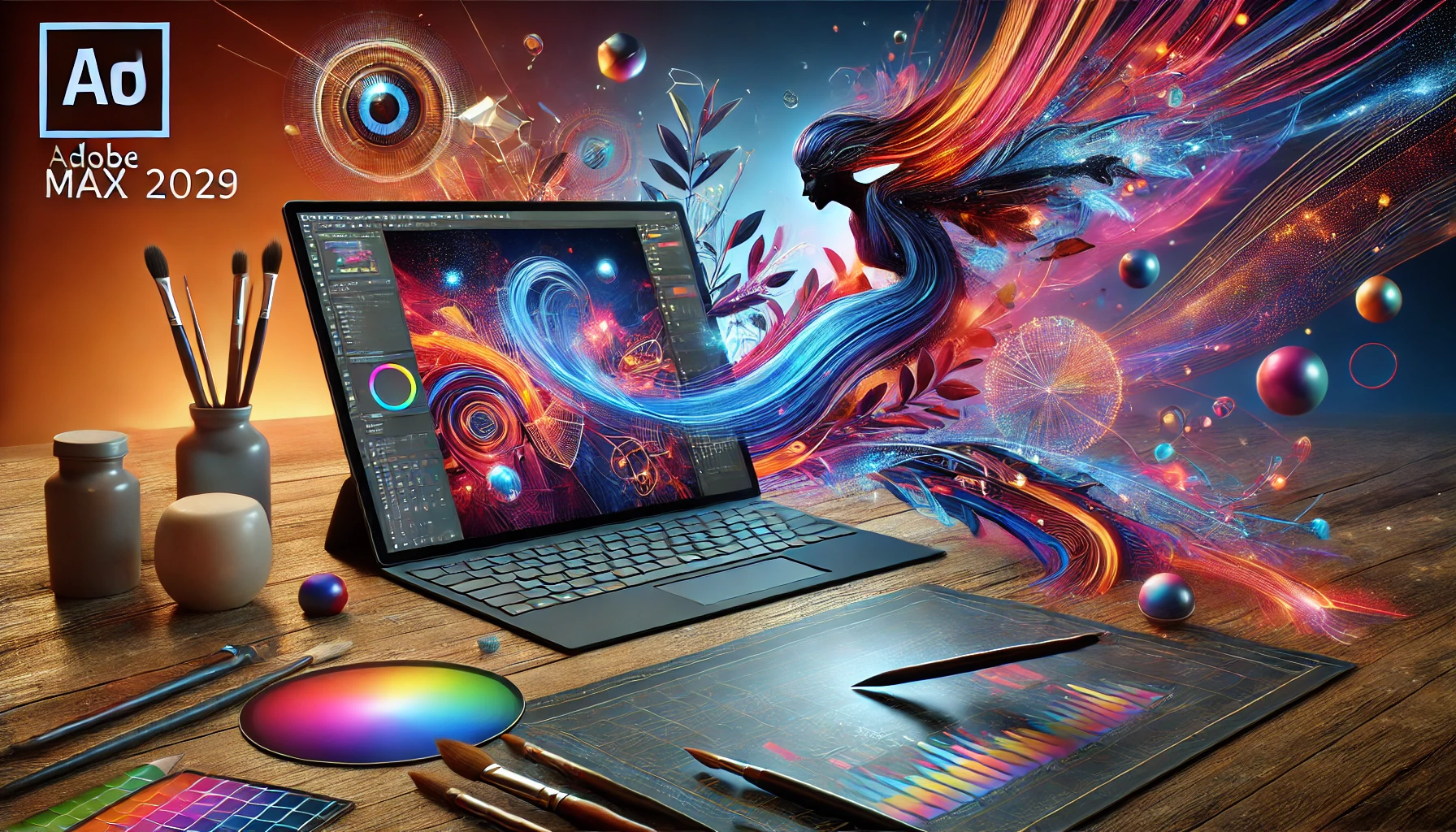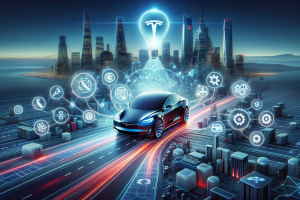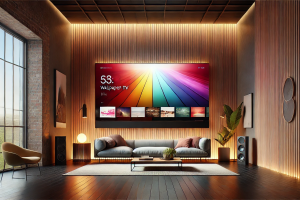Adobe MAX 2023: Navigating the AI Revolution in Creative Design
Adobe MAX 2023 has concluded, leaving the creative community with both excitement and trepidation about the increasing influence of artificial intelligence (AI) in the creative industry. While AI-powered tools have been positioned as essential in improving productivity and creativity, not all attendees were thrilled by the relentless focus on these technologies. For many, Adobe’s heavy emphasis on generative AI has sparked concerns about the future of creativity, skills, and human involvement in design.
This blog explores the major AI-related developments discussed at Adobe MAX 2023, including AI in design, the role of generative AI tools, and specific applications like Adobe Firefly AI and AI in Photoshop. We’ll also examine how creatives are responding to the rise of creative automation AI and its impact on traditional workflows.
The Growing Influence of AI in Design
Artificial intelligence has found its way into every corner of the design world, and Adobe MAX 2023 was no exception. One of the primary discussions centered around the increasing use of AI in design, with tools like Adobe Firefly AI and Adobe Illustrator AI features taking center stage. Firefly, Adobe’s generative AI model, is designed to assist designers by automating tasks such as image generation, photo editing, and content creation.
Many attendees were impressed by the efficiency of these generative AI tools, which can handle mundane and repetitive tasks. By offloading these tasks to AI, designers can focus on the more creative aspects of their work. However, others were concerned that relying too heavily on AI tools for creatives could dilute the creative process. For example, an illustrator who once meticulously sketched out concepts may now rely on AI to produce quick iterations, reducing the need for hands-on design work.
Key AI Tools in Adobe’s Creative Suite
- Adobe Firefly AI: Adobe’s generative AI tool that assists in creating visual assets like images and videos.
- AI in Photoshop: Automates complex editing tasks, including background removal, content-aware fills, and object selection.
- Adobe Illustrator AI features: Help speed up vector design, offering AI-assisted adjustments and improvements
These tools promise to transform creative workflows by enabling designers to work faster and more efficiently. However, the question remains: will this shift enhance creativity, or will it erode the skillsets that many creatives have spent years mastering?
Generative AI Tools: Revolutionizing Creative Workflows
One of the most talked-about features at Adobe MAX 2023 was the broad adoption of generative AI tools across Adobe’s suite of creative products. These AI models can create content from scratch, based on user prompts, opening up new possibilities for graphic designers, video editors, and illustrators.
Generative AI tools like Adobe Firefly use machine learning models to generate high-quality visual assets, from images and logos to videos and 3D models. These tools were highlighted in super sessions, where experts demonstrated how AI can be used to design social media campaigns, marketing assets, and more with unprecedented speed and ease.
While many attendees were excited about the potential to increase their productivity using creative AI features, others voiced concerns about how these tools might affect job security. For freelancers and in-house designers alike, the ability to generate content automatically means fewer hours spent on repetitive work—potentially reducing the demand for their services.
Benefits of Generative AI in Creative Workflows
- Increased efficiency: Tasks that used to take hours can now be completed in minutes using AI-generated assets.
- Enhanced creativity: AI tools for creatives can spark new ideas by quickly generating multiple design iterations.
- Improved collaboration: AI tools allow teams to iterate on ideas faster, making it easier to meet tight deadlines
However, as these tools become more common, creatives are facing a new challenge: balancing the convenience of AI automation with the desire to maintain originality and craftsmanship in their work.
Adobe Firefly AI: A Powerful Ally or a Creativity Killer?
Adobe Firefly AI was one of the most anticipated features of the conference, and it did not disappoint. Firefly’s integration into Adobe’s suite of tools, including Photoshop, Premiere Pro, and Illustrator, showcases how far Adobe has come in harnessing the power of AI for creative purposes.
Firefly allows users to generate images, videos, and even design layouts using natural language prompts. The AI model’s ability to quickly produce high-quality results was praised by many attendees. In Photoshop, for example, AI in Photoshop automates time-consuming processes like removing backgrounds, generating realistic textures, or filling in missing parts of images using Adobe’s content-aware fill technology.
Despite the impressive capabilities of Adobe Firefly AI, there was also a strong sense of unease. Many creative professionals worry that creative automation AI could make their skills obsolete. Tasks that once required a deep understanding of color theory, composition, and layout are now being performed by algorithms in a fraction of the time.
Pros and Cons of Adobe Firefly AI
Pros:
- Automates complex design tasks, saving time and effort.
- Enables rapid content generation, especially for marketing and social media campaigns.
- Opens up creative possibilities by offering AI-generated variations and suggestions.
Cons:
- Risks diluting creativity by automating processes traditionally handled by humans.
- Raises concerns about the future of jobs in creative industries, especially for entry-level roles
For creatives, the challenge lies in finding a balance between embracing the efficiency of AI and retaining the human touch that makes their work unique.
Adobe Premiere AI Tools: Transforming Video Editing
While AI in Photoshop and Illustrator took much of the spotlight, Adobe’s Premiere Pro AI tools also showcased how AI is reshaping video production. Adobe Premiere AI tools can now automate tedious tasks such as color correction, masking, and object tracking, allowing video editors to focus on the more creative aspects of storytelling.
One of the standout features in Premiere’s AI-powered suite is text-based video editing, which allows users to cut and edit videos simply by manipulating a transcript. This tool, combined with AI-generated subtitles and automated scene detection, has dramatically shortened the time it takes to produce high-quality videos.
Key Features of Adobe Premiere AI Tools
- Text-based editing: Allows editors to manipulate video by editing the transcript, making it easier to create rough cuts.
- Automated color correction: AI tools analyze footage and adjust colors for consistency across scenes.
- AI-enhanced masking and tracking: Simplifies complex visual effects by automatically detecting and tracking objects in video footage
For video editors, these tools are a game-changer. However, they also raise questions about the future of traditional video editing skills in an industry increasingly dominated by automation.
Creative Automation AI: The Future of Design or the End of Craftsmanship?
The rise of creative automation AI has sparked significant debate among attendees at Adobe MAX 2023. On the one hand, tools like Adobe Firefly AI and AI in design are enabling creatives to produce more content in less time, meeting the increasing demands of clients and brands in the digital age. On the other hand, there’s a growing concern that AI will erode the craftsmanship that many designers, photographers, and video editors take pride in.
As more creatives turn to generative AI tools to speed up their workflows, the industry must find a balance between efficiency and artistic integrity. AI tools can assist in generating ideas and handling tedious tasks, but they should complement—not replace—the human creative process.
Adobe MAX 2023 and the Future of Creativity
At Adobe MAX 2023, the relentless focus on AI reflected the industry’s drive toward faster, more efficient creative processes. Tools like Adobe Firefly AI, AI in Photoshop, and Premiere Pro AI tools are revolutionizing how creatives approach their work. However, as we move forward, the creative community must grapple with the implications of AI in design and its impact on traditional skills.
AI has the potential to open new doors for creatives, but the human touch remains irreplaceable. As we embrace creative AI features, the key will be ensuring that technology enhances creativity, rather than diminishing the artistry that defines the design industry.For more insights into how AI is reshaping creativity and other educational trends, visit Regent Studies.




